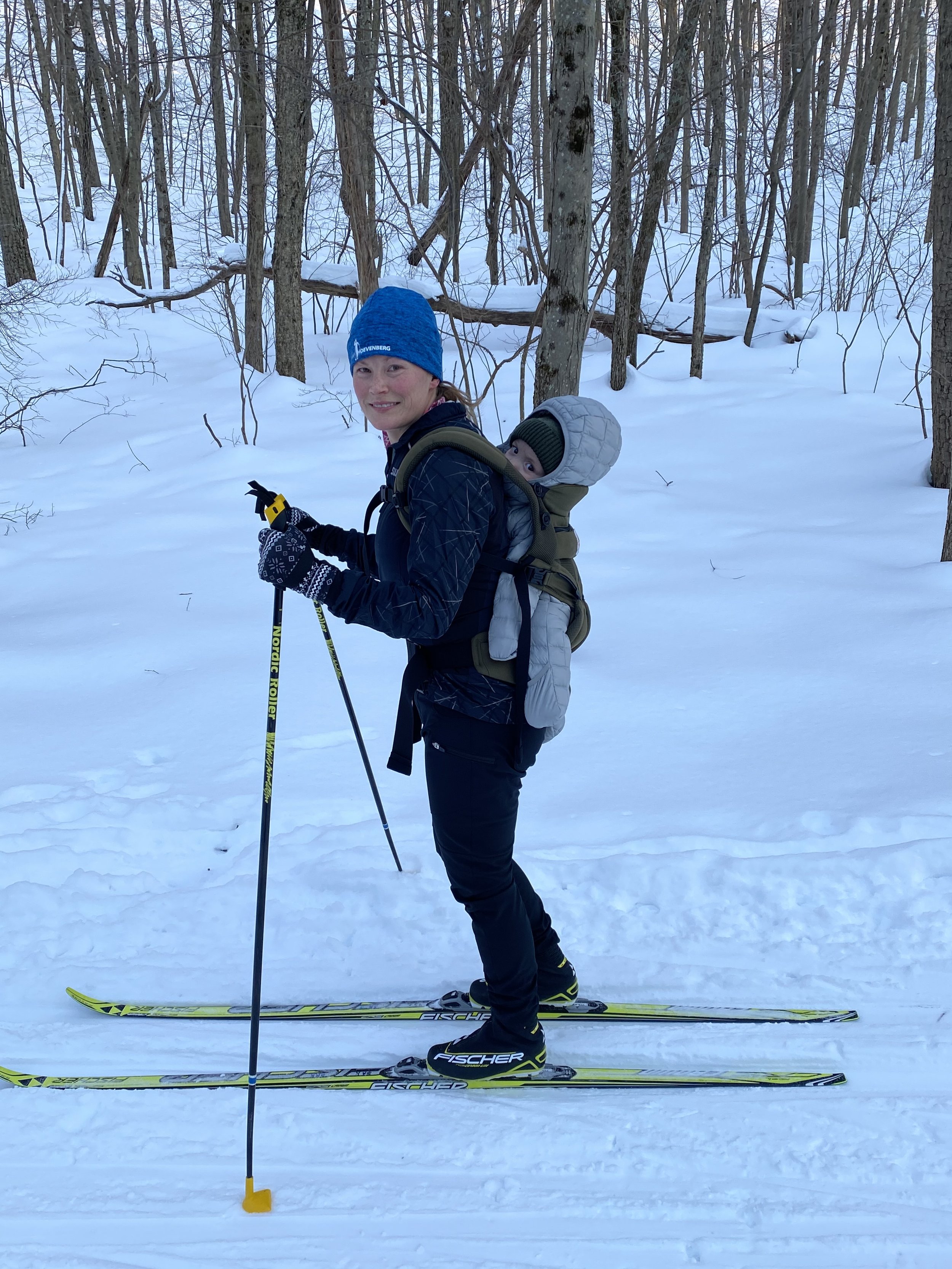Snowshoeing at Trapp Family Lodge
Every pregnancy guide book and website will tell you that it's very important to exercise during your pregnancy. Exercise will help to keep your body loose and supple, leaving you much more well equipped to deal with the strains and stresses of late pregnancy and, ultimately, labor. What those same books and websites are hazy about though, are exactly which sports and exercise you should be undertaking: if you have always been into cross country (XC) skiing, can you continue to ski during pregnancy?
XC Skiing During Pregnancy
The simple answer is that yes, provided you have the approval of your doctor, you are able to enjoy XC skiing during early pregnancy. If you are not a regular and expert XC skier then your pregnancy is definitely not a good time to take up the sport; it is important that you are able to balance and feel there is a minimal risk of falling during your ski, as it is any fall or bump that has the potential to be damaging to your baby.
Perhaps you can check out some skiing videos and read some snow reports before you hit the slopes, to consider how you feel about enjoying your favorite winter sport while you're pregnant? Some women find even seeing skiing makes them feel so concerned that they are unable to enjoy themselves like they usually do.
Even if you are an experienced and regular XC skier, there are some precautions you should take if you decide to hit the snow whilst pregnant. Try not to overexert yourself too much: take things slower and less enthusiastically than you might have previously. Pay attention to your body and how you're feeling; don't push through any twinges or shortness of breath. Sit down and take a short rest instead!
Backpack baby takes a peek at Highpoint Cross Country Ski Center
Many women will choose to stop skiing at around the fifth month of their pregnancy because this is when most women find they really notice their baby bumps and they begin to feel cumbersome. When your bump is large it will also affect your center of gravity, which could in turn increase your risk of experiencing a fall. You shouldn't be concerned about the higher altitude of your ski destination affecting your baby however; this is a widely reported myth! Plenty of babies are born at higher altitudes, and the change in oxygen levels will have no effect on your unborn child.
Finally, because every pregnancy and every woman is different, ensure you discuss your plans with your doctor before you continue with your current exercise regime. That way, he or she will be able to tell you of any risks posed to your own particular circumstances. But if you are a healthy woman having a normal healthy pregnancy then there should be no reason not to enjoy a leisurely ski.
Postpartum XC Skiing
Postpartum exercise is beneficial for new moms, both mentally and physically. Depending on the type of child birth you experience, most new moms are given the all clear to begin exercising again at around a month to six weeks after their baby is born.
Once you are given the okay to exercise, there's no reason why you can't return to XC skiing! Just take it slowly and make sure you don't overexert yourself. It is unlikely that you will be able to go straight back into your pre-baby routine; instead set yourself small challenges to work your way of to your pre pregnancy fitness levels. Don't extend your joints to the point where it causes pain or stretch too excessively. Post-partum women will find their joints and ligaments are much softer for the first couple of months following the birth of their child, so it is important to be aware of this and avoid hurting yourself.
By following these few simple tips, there is no reason not to enjoy XC skiing during your pregnancy and after the birth of your baby. Why not get your skis on and find out for yourself?
This article was contributed by Claire Roper








